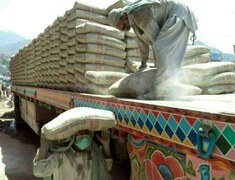Winston Churchill once remarked, “The further back you look, the further forward you are likely to see.” The recent escalation of the trade war amid a disintegrating economic world order is remarkably reminiscent of the pre-World War I era. By the end of the nineteenth century, the global economy was already fracturing.
A wave of retaliatory tariffs—introduced in Germany, France, Italy, and the United States—shattered the liberal trade consensus of the 1800s. As economies became isolated, crises like the Panic of 1873 eventually split the West into economic blocs, which eventually led to the First World War. A century later, as the world’s greatest economies collide, we see a new economic order emerging with competing blocs. As Mark Twain remarked, we may be watching history rhyme once more.
US President Donald Trump’s “Liberation Day” tariffs have undermined the multilateral trade order his predecessors had strived to sustain. A blanket 10 percent duty was followed by a 145 percent retaliatory strike against Chinese imports. China fired back with 125 percent tariffs and yuan devaluation. Amid the disruption of global supply chains, Trump gave in to pressure from the US tech lobby, granting tariff exemptions to a few key sectors including smartphones, laptops, and semiconductors.
Meanwhile, countries such as Pakistan only have a 90-day window until the 10% tariff transitions into a 29% one. According to the World Trade Organization, global trade will decline this year by 0.2 percent—possibly up to 1.5 percent if tariff uncertainty spreads beyond the US. These drops were only seen in times of severe crises like 2020 and 2009. The WTO’s mechanisms are paralyzed. Global trade is no longer rules-based; it’s bloc-based.
In an ever-divided world on economic lines, three competing ideologies are emerging. The US is pioneering national capitalism: industrial onshoring, bilateral pressure, and tariff shields. Europe is leaning into technocratic capitalism—rules-based subsidy regimes tied to carbon neutrality, AI regulation, and digital services. China, in contrast, has embraced command capitalism: centralized bailouts, equity stabilization through its “national team,” and subsidized oversupply to counter shocks.
Asia is charting a middle path of pragmatic pluralism; one that hedges diplomacy with realignment. In this game of chess, countries are playing multiple blocs. Several countries like India, Singapore, and South Korea are lowering rates and using targeted diplomacy, hedged reforms, and industrial subsidies to survive the economic turbulence. They are engaging all major powers, experimenting with bilateralism, and absorbing supply chains without ideological rigidity. Pakistan, however, has joined late—and it must catch up quickly.
On April 9, US tariffs on Pakistan surged to 29 percent due to a $2.99 billion trade surplus. That has since reverted to a baseline 10 percent under a 90-day executive pause. But this is more of a countdown than relief; one where Pakistan needs to act strategically. Once the pause expires, tariffs may return—unless Pakistan presents a compelling case for exemption.
The stakes are high. According to a policy note by the Pakistan Institute of Development Economics (PIDE), the materialization of tariffs could cost up to $1.4 billion annually and over 500,000 jobs, particularly in the textile sector, which makes up 76 percent of Pakistan’s exports to the US. This will create a domino effect, affecting other sectors; notably those that produce surgical tools, leather, rice, and sporting goods. PIDE’s report frames the tariffs not just as a challenge—but a “wake-up call” for deep export diversification.
And then, there’s a unique paradox at play. Pakistan was the world’s largest importer of US cotton in 2024. It imports raw cotton, processes and exports finished apparel—much of it back to the United States. It’s a rare bilateral value chain. The Export Facilitation Scheme (EFS), which taxes 18 percent on local raw materials, has contributed much to the large imports, as exporters prefer US cotton over domestically produced cotton, which is not exempt from sales tax.
This particular fact would play directly into Trump’s tariff logic: the higher the surplus, the higher the rate.
The Prime Minister, sensing the risk — or perhaps due to pressure from the IMF — blocked the EFS exemption a few days back. The move avoids undermining Pakistan’s argument that its textile exports support American agriculture. But it comes at a cost. Over 120 spinning mills have shut down, local ginners are in crisis, and the Pakistan Cotton Ginners Association (PCGA) has warned of record-low production. Without a stable tax framework or support price, Pakistan’s cotton economy is collapsing from both ends.
There is no easy fix, but there is a viable strategy.
Pakistan must present itself as an integrated, value-adding partner — not a surplus threat. Smartphones and laptops were recently exempted from tariffs under a Presidential Memorandum — proof that targeted diplomacy can yield results. Cotton, unlike smartphones, supports jobs on both sides of the Pacific. That argument must be front and center in Washington.
Despite these complications, the textile sector cannot be abandoned. Relief must come in other forms: energy cost subsidies, faster GST refunds, digitized customs, and textile diversification, coupled with special interest rate zones for export based sectors. The Karachi Textile Expo 2025 saw record participation despite looming tariffs — showing that demand exists if Pakistan remains competitive. And there are other sectors waiting for investment: workwear, technical textiles, intelligent fabrics, and green apparel.
Encouragingly, official data shows that Pakistan’s textile and clothing exports grew 9.38 percent year-on-year during the first nine months of FY25, rising from $12.44 billion to $13.62 billion. Readymade garments and knitwear led the surge, up 19.05 percent and 16.82 percent in value, respectively. Exports of bedwear, towels, and canvas products also rose steadily. However, the broader picture remains fragile.
Yarn exports dipped 32 percent, raw cotton exports plunged 98.45 percent, and cotton cloth volumes contracted. Despite having an installed capacity of $25 billion, textile exports have remained largely static over the past two years due to structural bottlenecks, including high input costs and delayed refunds. Exporters continue to urge the government for faster GST refunds and rebate clearances, without which this momentum may stall—especially if tariffs return.
Diplomatically, Pakistan is now entering high-stakes negotiations. A Ministry of Commerce delegation is set to meet US trade officials. That meeting must go beyond cotton. Mineral diplomacy is rising fast. The US State Department recently called Pakistan’s critical mineral reserves “strategically important” for supply chain security. This is a lever; pairing textile diplomacy with minerals and digital services — where Pakistan earned $3.2 billion in IT exports last year — can frame the relationship in broader terms.
Simultaneously, reforms must accelerate. Pakistan’s customs infrastructure remains outdated, still reliant on physical invoices and discretionary penalties. Rules 389 and 391, flagged by US exporters recently, have caused delays and valuation disputes.
Even Pakistan’s own Senate has raised alarm bells twice. In recent hearings, the Senate Standing Committee on Commerce criticized Pakistan Customs for mishandling consignments from Iran, citing delays and arbitrary assessments. These same issues — now magnified by US complaints — erode exporter confidence and delay trade flows. Reforming customs is now imminent going beyond just efficiency; it’s now about strategic survival. India, in contrast, has rolled out “Faceless Assessment” and reduced customs time to 1–2 days at key ports.
Pakistan’s exorbitant electricity rates also need to be addressed. High electricity costs threaten to erase any competitive edge. Industrial electricity tariffs in Pakistan range from Rs 31.85 to Rs 44.46 per kilowatt-hour — nearly double those in China and more than triple the Rs 8 to Rs 12 range in India and Bangladesh. Without energy reform, Pakistan’s manufacturing base risks further erosion. If US tariffs are reinstated, and input costs remain unchecked, Pakistani exports will become prohibitively uncompetitive — losing its competitive edge to other textile exporting countries such as Vietnam and Bangladesh.
This is a classic case of sequential game theory: Pakistan must anticipate the likely US response not just to its current actions, but to how its trade surplus and input mix evolve. If it shifts away from US cotton under domestic pressure, the surplus widens. If its exports become less competitive due to high electricity and outdated customs, US buyers will shift elsewhere—and tariffs become more politically palatable in Washington. The optimal strategy, therefore, is preemptive: maintain the value-added bilateral loop through cotton imports, reduce surplus pressure, and offer reciprocal tariff relief where feasible, such as on US machinery or petroleum.
Despite the uncertainty, there are reasons to be optimistic. Fitch Ratings upgraded Pakistan to B- this month, citing a stable macro outlook and sustained IMF compliance. While challenges remain — large-scale manufacturing (LSM) shrank by 1.9% in February and IMF conditions remain strict — the upgrade signals a tentative return of creditworthiness. It also opens doors to market-based instruments like Panda Bonds and Green Sukuk. These reduce reliance on dollar-denominated loans and enable access to yuan-backed repayment ecosystems, particularly if tied to infrastructure linked to Chinese supply chains.
Islamabad has also begun to explore its options. According to Bloomberg, Pakistan is considering increasing imports of US cotton and soybeans to narrow its $2.99 billion trade surplus—an effort aimed at undercutting Trump’s tariff logic. The deliberations reportedly include purchases of Texas crude oil, though concerns about high freight costs and internal consensus have delayed a final decision. Still, the strategic intent is clear: shift the balance sheet through high-volume, high-visibility imports to demonstrate reciprocity and preempt punitive escalation.
Pakistan recently recorded a current account surplus of $619 million in March 2025—a 229 percent increase from March last year—driven by record remittances of $4.1 billion. For July–March FY25, the cumulative surplus stands at $1.85 billion, a sharp turnaround from the $1.65 billion deficit during the same period in FY24. While this strengthens the rupee and reduces short-term external pressures, it complicates Pakistan’s tariff case.
Since Pakistan’s current account surplus is driven by remittances, not exports, it must be clearly communicated that this surplus is not trade-related. Otherwise, it risks being misread in Washington as evidence of an unfair trade imbalance — strengthening Trump’s argument for higher tariffs. To counter this, Pakistan should explicitly highlight its large-scale imports of US cotton and energy, which create jobs in the US and reflect balanced bilateral trade.
Hence, the logic circles back: Pakistan must lock in US-linked supply chains, reduce bilateral asymmetries, and highlight its integration into American agricultural and energy ecosystems. If it fails to do so, the surplus will appear as a one-sided gain—and in a world where tariff policy is driven less by economics and more by optics that is a costly misreading of the board.
Regionally, the opportunity is clear. Vietnam, a cotton exporter and key textile rival, now faces US tariffs as high as 46 percent after the 90-day pause ends. If Pakistan improves logistics, reduces energy tariffs, and fast-tracks reforms, it can absorb the spillover demand. India has already moved: Apple is routing up to 50% of iPhones from Tamil Nadu. Pakistan must seize this window before the global trade chessboard resets.
Because the world is now divided — not by ideology, but by tariffs and trust. And in this realignment, Pakistan can be the best case for pragmatic pluralism: trading with China, negotiating with the US, and deepening reform at home.
Multilateralism may return one day. But until then, Pakistan must think and act like a hedger — one that moves fast, thinks long, and doesn’t wait for the rules to be rewritten.
Copyright Business Recorder, 2025
The writer is an economist and educationist based in Lahore























Comments
Comments are closed.